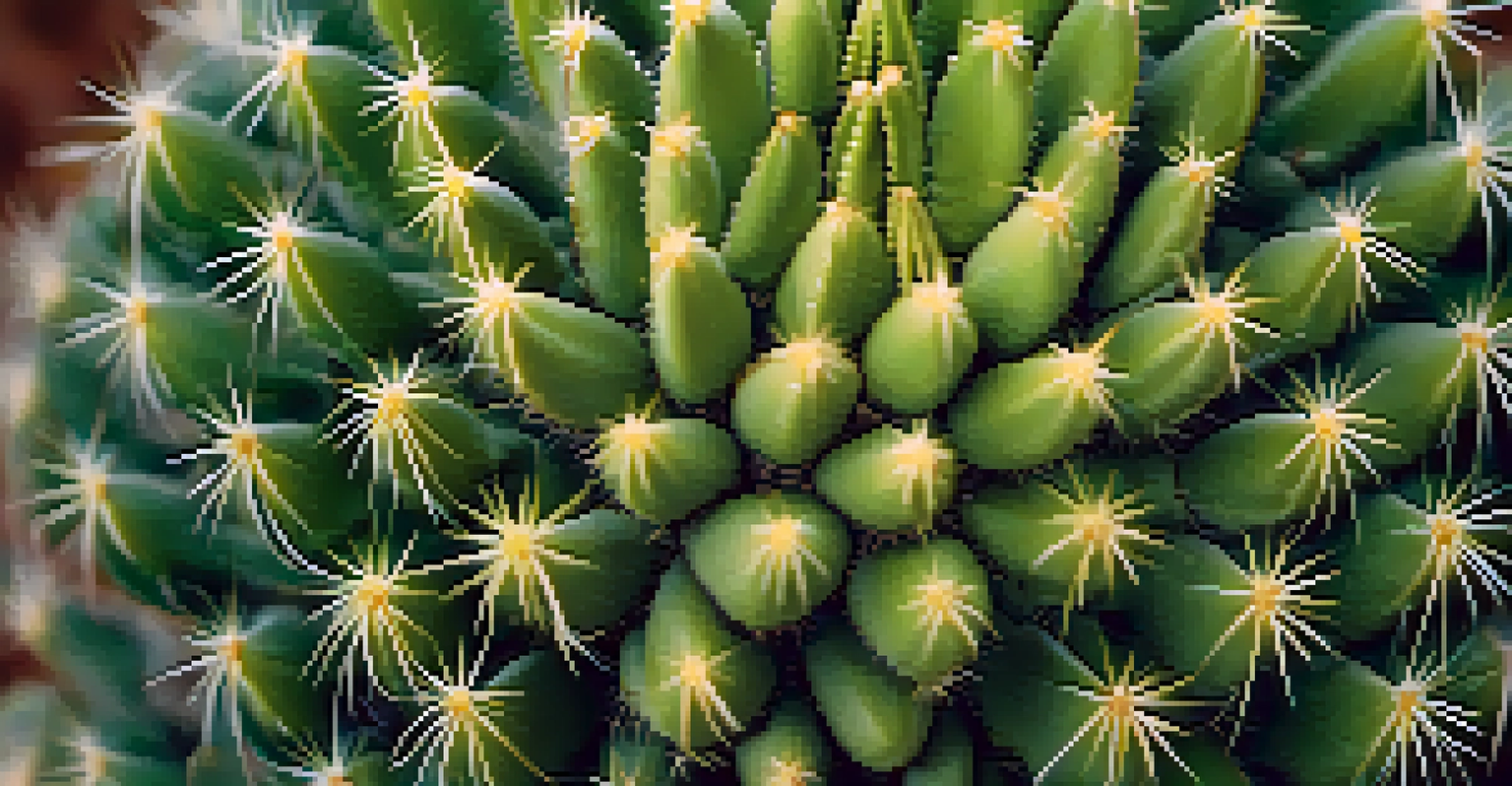The Evolving Legal Framework Surrounding Peyote Use in America

Understanding Peyote: A Brief Overview of Its Cultural Significance
Peyote, a small cactus native to Mexico and the southwestern U.S., has been used for thousands of years in spiritual ceremonies by Indigenous peoples. The psychoactive compound mescaline found in peyote is revered for its ability to facilitate profound spiritual experiences. This cultural significance has led to a complex relationship with legal frameworks as societal views on psychedelics evolve.
The use of peyote is intertwined with their identity, traditions, and spiritual practices.
For many Indigenous communities, peyote is not merely a drug but a sacred tool for healing and connection with the divine. Consequently, the use of peyote is intertwined with their identity, traditions, and spiritual practices. This cultural context is crucial for understanding the ongoing legal debates about its use.
As the conversation around drug policy shifts, it's essential to recognize the respect and reverence with which peyote is held. This understanding forms the foundation for legislative discussions and the legal battles that have followed.
Historical Legal Battles: Peyote and the American Legal System
The legal history surrounding peyote use in the United States is marked by significant court cases that have shaped its current status. One landmark case, Employment Division v. Smith (1990), involved two Native American church members who were fired for using peyote during a religious ceremony. The Supreme Court ruled against them, stating that states could deny unemployment benefits to those who broke the law, even for religious reasons.

This ruling sparked outrage and a push for legislative change, leading to the Religious Freedom Restoration Act (RFRA) in 1993. RFRA aimed to protect religious practices, including the use of peyote by Indigenous peoples, but it also set the stage for ongoing legal disputes about the balance between religious freedom and drug regulation.
Peyote's Cultural Importance
Peyote is a sacred tool for Indigenous peoples, deeply intertwined with their spiritual practices and identity.
These historical legal battles illustrate the tension between government regulations and the rights of Indigenous peoples to practice their traditions. Understanding this context is vital as we look at the evolving legal framework today.
Current Legal Status of Peyote: A Mixed Picture
As of now, peyote is classified as a Schedule I controlled substance under federal law, which means it is considered illegal for general use. However, religious exemptions exist for certain Indigenous groups, allowing them to use peyote in sacramental contexts. This duality highlights the ongoing complexities in the legal treatment of peyote.
This balance will be key in shaping the future of peyote legislation.
Some states have enacted laws that further protect the rights of Indigenous peoples to use peyote, creating a patchwork of regulations across the country. For instance, states like Texas have specific provisions that permit the use of peyote for religious purposes, reflecting a recognition of its cultural importance.
Despite these protections, challenges remain, especially as awareness and interest in psychedelics grow. The legal landscape continues to evolve, and advocates are pushing for broader access to peyote for both Indigenous and non-Indigenous users.
The Role of Advocacy Groups in Peyote Legislation
Advocacy groups play a pivotal role in shaping the discourse around peyote use and its legal status. Organizations like the Native American Church and various psychedelic advocacy groups work tirelessly to promote awareness and understanding of peyote's cultural significance. They aim to educate lawmakers and the public about its importance in spiritual practices.
These groups often collaborate with legal experts to challenge restrictive laws and advocate for legislative reforms that honor Indigenous rights. Their efforts have led to increased dialogue about the need for a more nuanced approach to peyote legislation, one that acknowledges its cultural roots.
Legal Challenges and Changes
The legal status of peyote reflects ongoing battles between religious freedom and drug regulation, leading to a complex and evolving legal landscape.
By engaging in grassroots campaigns and public awareness initiatives, these advocacy groups are essential in driving change. Their work helps bridge the gap between traditional practices and contemporary legal frameworks.
Emerging Research: The Therapeutic Potential of Peyote
Recent studies have begun to explore the therapeutic potential of peyote and mescaline, shedding light on its possible benefits for mental health. Research into psychedelics has gained momentum, with growing evidence suggesting they can effectively treat conditions such as PTSD, anxiety, and depression. This emerging research could influence future legal considerations surrounding peyote use.
As scientists delve deeper into the potential benefits of mescaline, the conversation has shifted from viewing peyote solely as a religious sacrament to recognizing its possible role in modern medicine. This dual perspective may encourage lawmakers to rethink the current legal constraints on peyote.
However, it’s crucial to approach this research with respect for Indigenous traditions and practices. The challenge lies in integrating this newfound understanding of peyote's benefits while honoring the cultural significance it holds for Indigenous communities.
Future Directions: The Evolving Legal Framework for Peyote
Looking ahead, the legal framework surrounding peyote in America is poised for change as societal attitudes shift towards psychedelics. With increasing interest in mental health treatments and the growing recognition of Indigenous rights, there may be opportunities for more inclusive legislation. Advocates hope to see laws that not only protect Indigenous use but also allow for broader access to peyote in therapeutic settings.
Potential legislative changes could lead to a more unified approach, reducing the patchwork of regulations that currently exists. This would require collaboration among lawmakers, Indigenous leaders, and advocacy groups to create a framework that respects cultural significance while addressing public health concerns.
Emerging Therapeutic Research
Recent studies highlight the potential therapeutic benefits of peyote, prompting discussions about its role in modern medicine alongside its traditional uses.
As this conversation unfolds, it's crucial for all stakeholders to engage in respectful dialogue that honors both the cultural heritage of peyote and the potential benefits it may offer in contemporary contexts.
Conclusion: Balancing Tradition and Modernity in Peyote Use
In conclusion, the evolving legal framework surrounding peyote use in America reflects a complex interplay between tradition and modernity. As society grapples with the implications of psychedelics, it's essential to prioritize respect for Indigenous practices while exploring new avenues for therapeutic use. This balance will be key in shaping the future of peyote legislation.
The journey toward a more equitable legal landscape will require ongoing dialogue and collaboration among diverse stakeholders. By acknowledging the cultural significance of peyote and the potential benefits it holds, we can work towards a framework that honors both perspectives.

Ultimately, the path forward is one of mutual respect and understanding, ensuring that peyote remains a sacred tool for Indigenous peoples while also being recognized for its potential role in contemporary mental health treatment.